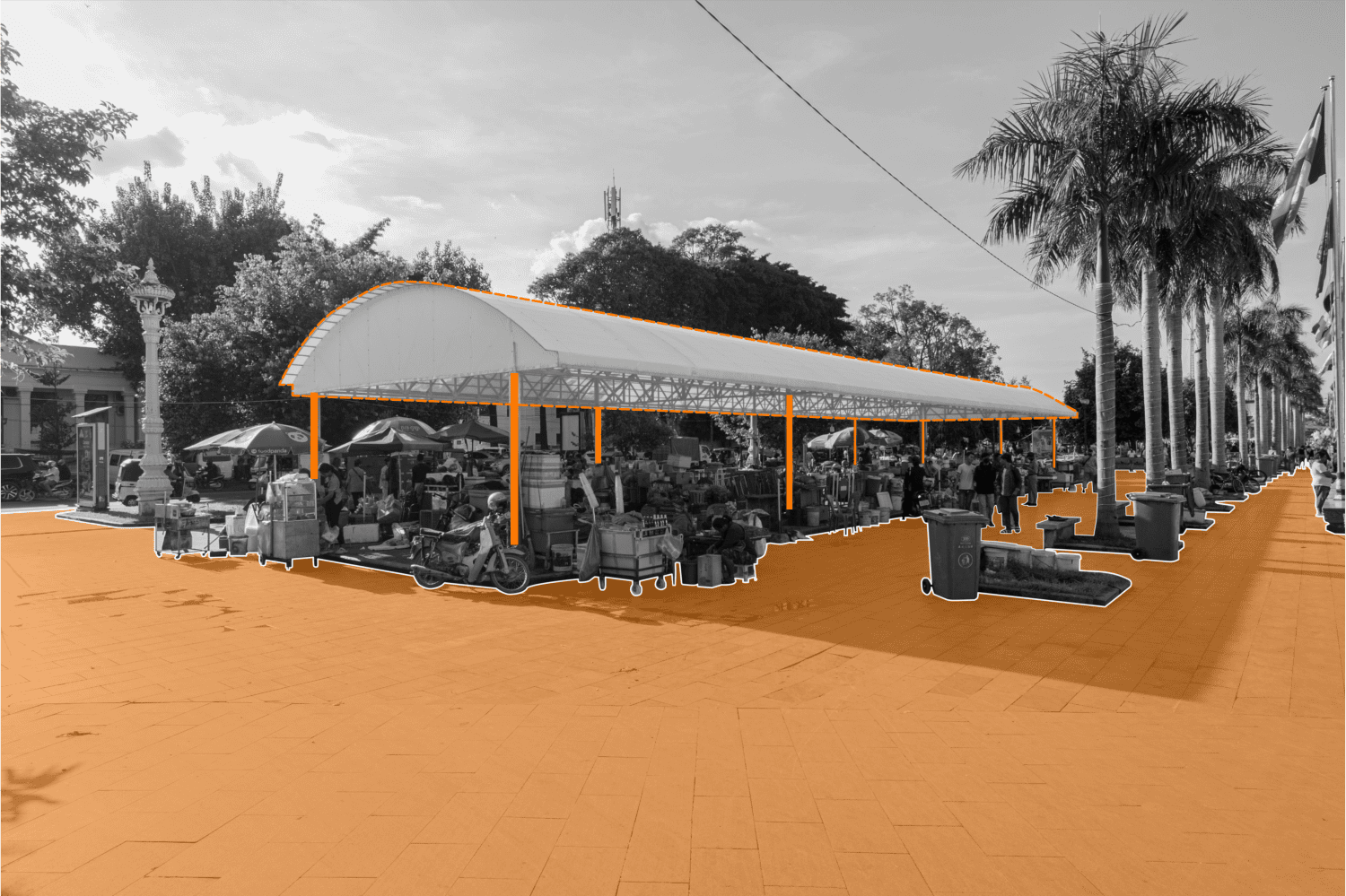Across Cambodia, on the counters of coffee shops, retail shops and restaurants sit QR Codes waiting to be scanned by paying customers. Such technology was not even widely known, let alone accepted, even among urbanites three years ago. Cambodia is undergoing rapid digital transformations across various sectors, and the government plans to take this process forward, with digital tax filing, business registration and other public services.
 Nay Darlin is a junior research fellow at Future Forum whose research interests lie primarily in the areas of inclusive growth, digital transformation and tourism development.
Nay Darlin is a junior research fellow at Future Forum whose research interests lie primarily in the areas of inclusive growth, digital transformation and tourism development.
In some sectors, the digital transformation is already progressing. Bakong, for instance, is a digital service introduced by the National Bank of Cambodia in cooperation with Soramitsu, a blockchain company, for digital inter-bank transfers. According to the National Bank of Cambodia, a total of 5.7 million transactions worth more than $2.3 billion were made through Bakong in 2021.
While Covid-19 accelerated the changes, the Cambodian government has made it clear they intend to build on this momentum with a goal of a “vibrant digital economy and society” by 2025.
Achieving this future in an equitable way, however, will require the country to address the lack of inclusiveness in the design and development of digital products and services. If Cambodia’s digital divide remains, then the transformation envisioned by the government and private sector has the potential to exacerbate existing disparities, spur exclusion and strip away people’s rights to education, employment and political participation when more and more important parts of our lives are being moved to the digital space.
Accessibility-First
Discussions about how Cambodia will accomplish its digital transformation must include the issue of how digital products and services are designed. In most cases, digital products and services are created, designed and marketed by and for “early adopters,” who are generally young, urbane, and tech-savvy. Too often these products fail to take a universal design approach — an approach that ensures “products and environments are usable by all people, to the greatest extent possible, without the need for adaptation or specialized design.” Universal design principles include equitable use, flexibility, simplicity, tolerance for error, low physical effort and appropriate size.
When products and services are designed by and for early adopters, they often overlook features that would meet the needs of those who are less educated, those who cannot speak or read English, the needs of the elderly or of Cambodians with disabilities.
For instance, while recently rolled out e-government services remain mostly inaccessible or unusable for vulnerable groups. I examined three digital government services: online business registrations, e-filing of taxes and the Labor Automated Central Management System — assessing them against international standards.
I found that these services do not conform to many of the basic design principles recommended in the guidelines, such as the lack of video and audio alternatives to text, including text-to-speech tools. This means that if you are illiterate or have a temporary or permanent visual impairment, you would not be able to use such services without external assistance. The online business registration website provides video instructions with subtitles in both English and Khmer, but the registration process itself does not have a text-to-speech option.
These sites also have limited keyboard-only accessibility, meaning that navigation using only a keyboard can be challenging or even impossible. Having the ability to navigate a website or use the service via keyboard is essential for those who are unable to use mice, including people with a visual impairment or those who cannot see the small cursor, such as the elderly.
To avoid these kinds of barriers, principles of inclusivity must be incorporated into the design phases of these digital products and services. This would require the elderly, the less educated, and people with disabilities to be included in the design and testing phases of development. It is important to note that adopting this approach not only aids the targeted vulnerable group but also benefits all users. For instance, studies found that the use of closed captions can improve students’ reading comprehension.
Products designed and put forward by the government must set an example for the private sector. For instance, government websites and mobile apps that provide critical services must include features and functions to assist people with permanent, temporary or situational disabilities. These add-ons can be as simple as allowing users to customize the size of texts, increasing color contrasts, providing captions for video content, or adding text-to-speech options.
Even more importantly, comprehensive government-created and enforced guidelines must be in place to ensure these disability-accessible accommodations are incorporated into all digital products and services. Checklists such as the international Web Content Accessibility Guidelines can be used as references, but authorities need to localize certain components to fit with the local context, language, and users’ digital literacy.
Designing for Low Digital Literacy
New digital products, both from the public and the private sector, must also be designed in a way that takes into account the current state of digital literacy in Cambodia, which remains low. Digital literacy is generally defined as people’s ability to understand and integrate digital technologies into economic and social activities.
According to the Minister of Post and Telecommunications, only around 30% of Cambodians possess basic digital literacy skills. The U.N. Development Program also conducted a survey in 2020 of 1,285 young Cambodians and found low digital literacy scores in four key areas: hardware/software use, information literacy, content creation, and, most concerningly, safety. This essentially means that many Cambodian youths are still unable to be productive with digital technologies when studying or working.
Those who lack core digital skills and knowledge are not only at risk of being excluded from many digital spaces and economic opportunities, but can also be more vulnerable to cyberattacks and scams. During the height of the pandemic, when most commercial transactions were done online, government officials warned citizens to be wary of scams and hacks. Concerns are also mounting as cyberattacks are increasingly more sophisticated and organized, while the country’s vulnerability to cyberattacks is still significantly high.
In the long-term, the Cambodian government is striving to equip the population with greater digital literacy — the Education Ministry has already streamlined technology courses in the national high school curriculum — but this is not a change that can happen overnight. Therefore, designers working in Cambodia must instead create their products in a way that acknowledges and includes these less-skilled users.
Fortunately, various tools have been created. For instance, IDEO, Google and the Bill and Melinda Gates Foundation have created the Digital Confidence Design Tools. The toolkit emphasizes the need to design with rather than for people, which pushes designers to consider a diverse range of needs and perspectives of their users.
More specifically, user context cards push developers to understand their users’ network connectivity, budgets, cultural contexts, gender norms, and digital, textual and numerical literacy. For instance, YouTube rolled out voice commands so illiterate users can better search for and navigate through videos. As another example, the concept of a digital account or profile might be foreign to low-literate users; to address this, TikTok almost immediately directs new users to the app’s main feature without the need to create an account.
Unesco conducted a review of 32 case studies and came to a similar conclusion, championing the co-designing approach, where low-skilled and low-literate people are involved in creating and testing products and services. The use of mixed media (text, audio, video) helps users with different and proficiency levels, it added.
Access to Tools
The lack of access to information technologies is another important barrier to full digital inclusion in Cambodia.
For example, while Cambodia possesses significant potential on the mobile phone front, having a 124% mobile phone penetration rate, 80% 4G coverage of the total population, and some of the cheapest internet prices in Southeast Asia, Cambodians still lack access to important technological tools. The percentage of households that own a computer has historically been very low at just 12.5%, according to the International Telecommunication Union in 2018.
Public and private providers of digital products and services understand the digital adoption landscape of Cambodia and have pushed for mobile-first solutions. Most digital government services are also provided via mobile apps. However, to perform productive activities (i.e. producing a document, making a PowerPoint presentation, compiling and analyzing data), one should have a computer. Moreover, having a workforce with a higher level of digital literacy aligns with the government’s plan to establish a knowledge-based and digital economy.
Expanding the number of households that have access to technology and the internet will be essential. While this goal can be accomplished indirectly through the increased income and living standard and the development of basic infrastructure such as electricity, the government and other relevant stakeholders can also intervene through other channels. Community-based solutions, including setting up computer labs in public spaces and schools, have been tested and were found to have positive results in closing the digital gap in local communities in Malaysia and the U.K.
Long-Term Digital Inclusion
As more aspects of our lives move into the digital space, promoting digital inclusion is fundamental to realizing the full potential of a digital transformation while avoiding exacerbating existing social and economic disparities. Achieving this requires not only promoting access to affordable information technologies but also requires designing tools and services in a way that meaningfully promotes accessibility and inclusion. If not, Cambodia’s digital transformation will only widen the gap between the digital haves and the digital have-nots.
Nay Darlin is a junior research fellow at Future Forum whose research interests lie primarily in the areas of inclusive growth, digital transformation and tourism development.













